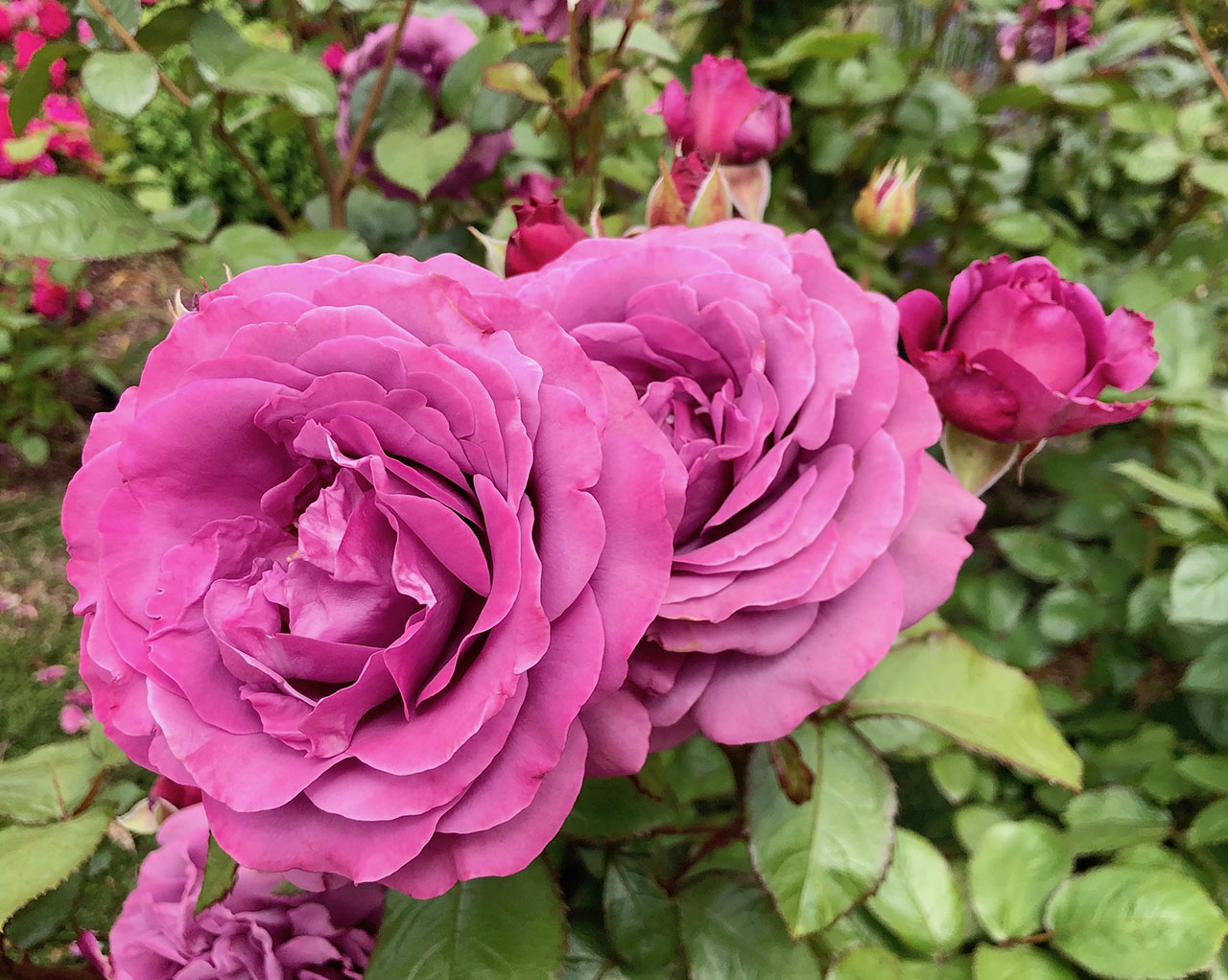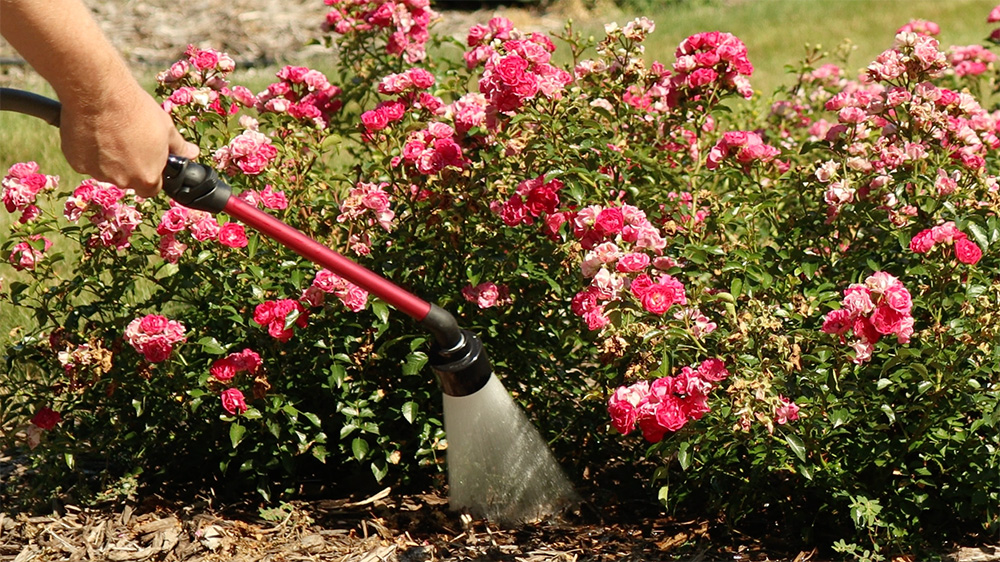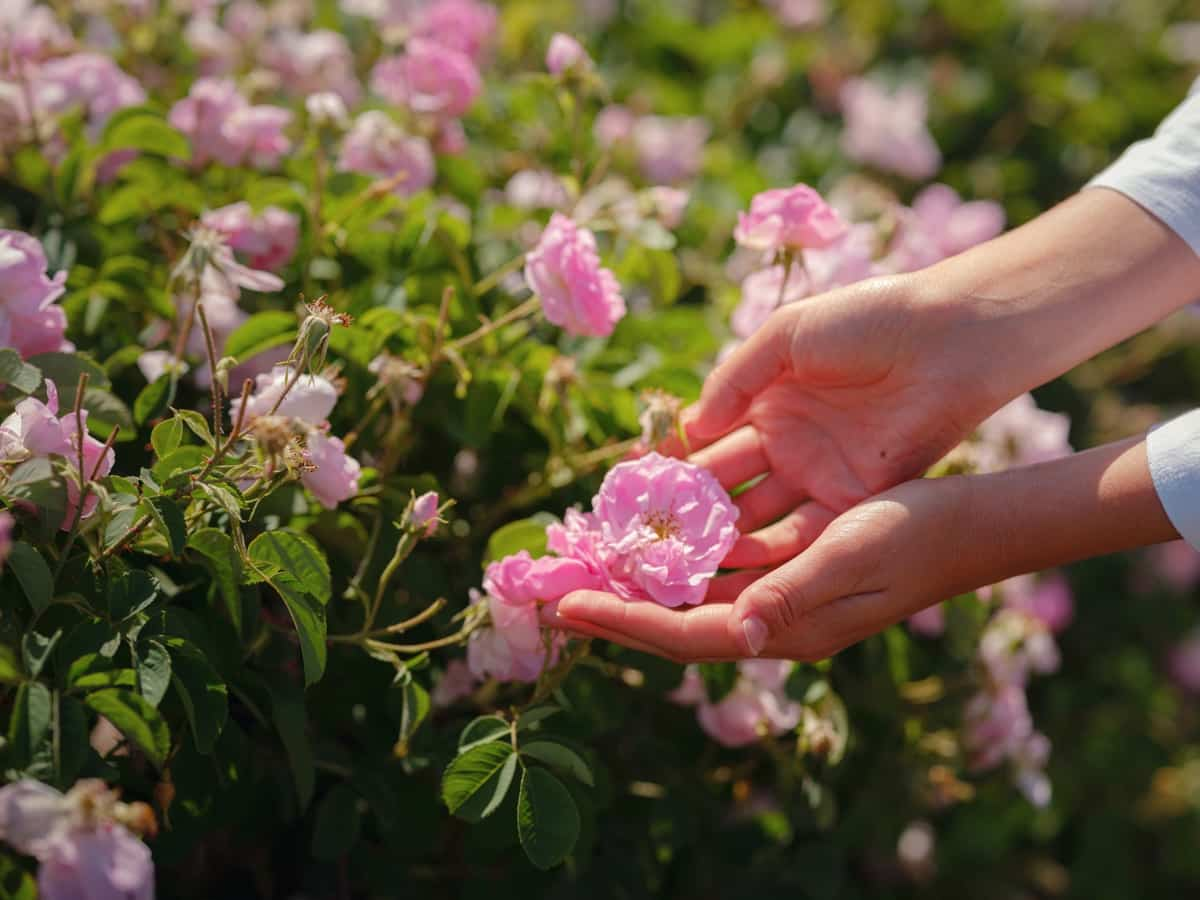Essential Rose Garden Maintenance Tips For Lush Blooms
From watering techniques to pruning advice, learn the key rose garden maintenance tips that every gardener should know for a flourishing garden.
Dec 18, 202461 Shares60.6K Views

A flourishing rose garden is more than just a beautiful space; it's a testament to the gardener's dedication and skill. Roses, with their enchanting blooms and rich fragrances, require more than basic care to thrive. They need regular attention to light, water, soil conditions, and seasonal upkeep to maintain their vibrancy. A well-planned approach ensures that roses not only survive but also flourish, rewarding you with a stunning display year after year.
Many people see roses as high-maintenance plants, but with the right techniques, they can be surprisingly resilient. Understanding key aspects of rose care from optimizing sunlight exposure to using proper pruning methods allows any gardener to maintain a healthy, thriving rose garden. By focusing on these maintenance strategies, you can transform your garden into a lasting showcase of beauty.
Choose The Right Location For Your Roses
The foundation of any successful rose garden starts with choosing the perfect spot. Roses require plenty of sunlight to reach their full potential, with at least six to eight hours of direct sun daily. Morning sunlight is especially beneficial, as it helps dry dew off the leaves, preventing diseases such as powdery mildew and black spot. In regions with scorching summers, roses will appreciate some afternoon shade to avoid heat stress, but they must still receive their required sunlight in the earlier part of the day.
Soil composition is another crucial aspect of selecting the right location. The best soil for rosesis well-draining, slightly acidic soil with a pH between 6.0 and 6.5. If your soil tends to retain too much moisture, consider amending it with compost or organic matter to improve its structure. This not only enhances drainage but also enriches the soil with the nutrient's roses need to flourish.
Watering Techniques For Healthy Roses
Watering your roses is both an art and a science. Deep, thorough watering is essential to encourage a strong root system, allowing your roses to absorb the nutrients and moisture they need to stay healthy. Shallow watering can cause the roots to remain close to the surface, making them more vulnerable to drought and disease. Aim to water your roses once or twice a week, adjusting based on your local climate and the time of year. During hotter months, roses may need more frequent watering, while cooler weather will allow for less.
It’s important to water roses at the base of the plant to avoid wetting the leaves, as moisture on the foliage can lead to fungal infections. Watering early in the morning is ideal because it gives the plant time to absorb moisture before the day heats up, and any residual moisture on the leaves can evaporate before nightfall.
Proper Pruning For Maximum Growth And Health
Pruning is one of the most critical tasks when it comes to rose care, as it helps shape the plant, encourages blooming, and removes any dead or diseased branches. The best time to prune roses is in early spring, just before new growth begins. At this stage, the plant’s energy is concentrated in the roots, which means that cutting back the canes will stimulate fresh, vigorous growth once the growing season starts. Understanding how and when to pruneis essential for ensuring your roses bloom beautifully.
Proper pruning techniques include removing dead, damaged, or crossing branches to improve airflow within the plant, reducing the likelihood of diseases. Cut at a 45-degree angle above outward-facing buds to direct new growth away from the center of the plant. For climbing roses, it's best to prune after the first bloom cycle to encourage additional flowering later in the season. Regular pruning not only keeps your roses looking neat but also promotes healthier, stronger growth in the long term.
Fertilizing For Abundant Blooms
Roses are heavy feeders, meaning they require regular feeding throughout the growing season to produce large, vibrant blooms. Begin fertilizing in early spring when new growth appears and continue feeding every 4-6 weeks during the blooming season. A balanced rose fertilizerwill provide the essential nutrients your roses need, including nitrogen for leaf growth, phosphorus for root development, and potassium for flower production.
While synthetic fertilizers can offer quick results, organic options such as compost, fish emulsion, and manure are excellent for improving the soil structure and providing a slow, steady release of nutrients. Whichever method you choose, be sure to water your roses thoroughly before and after fertilizing to prevent root burn and help the nutrients reach the roots more effectively.
Pest And Disease Control In Rose Gardens
Roses are prone to a variety of pests and diseases, but with the right preventive measures and timely intervention, these issues can be managed effectively. Common pests that target roses include aphids, spider mites, and Japanese beetles, all of which can cause significant damage if left untreated. A healthy garden ecosystemis the best defense against these pests, introducing beneficial insects such as ladybugs and lacewings can help keep the pest population under control.
When it comes to diseases, black spot, powdery mildew, and rust are the most common fungal infections that afflict roses. Good air circulation, proper spacing between plants, and avoiding overhead watering are key preventive measures. If you notice any signs of disease, remove affected leaves and branches immediately to prevent the spread. Fungicidal treatments may also be necessary but rotating the types of fungicides you use can help prevent pathogens from becoming resistant.
Seasonal Care For Year-Round Rose Health
Caring for roses throughout the year involves adapting your maintenance routine to the changing seasons. In the spring, focus on pruning and fertilizing to encourage new growth. Summer is the time for consistent watering and vigilance against pests and diseases. As fall approaches, reduce the amount of water and prepare your roses for dormancy by halting fertilization. Winter care is especially important in colder climates mulch heavily around the base of the plants to insulate the roots from freezing temperatures.
For added protection, you may also cover your rose bushes with burlap or rose cones. It’s best to avoid heavy pruning in the fall, as this can stimulate new growth that won’t survive the winter. By adjusting your care techniques throughout the year, you’ll ensure that your roses remain healthy and strong, ready to bloom again when the growing season begins.
Common Mistakes To Avoid In Rose Care
Even experienced gardeners can make mistakes when caring for roses. One of the most common errors is over-fertilizing, which can burn the roots and cause more harm than good. Always follow the recommended dosages and schedules for feeding your roses. Another frequent mistake is improper pruning, cutting too much or too little can weaken the plant or hinder its growth. Be strategic about your pruning to encourage healthy development.
Inconsistent watering is another issue that can lead to stressed plants. Roses need consistent moisture, especially during their blooming period, but overwatering can lead to root rot. Striking the right balance is key to ensuring your roses remain healthy.
FAQs
How Often Should I Water My Roses?
Roses typically need deep watering once or twice a week, depending on the climate and soil conditions. Ensure the water reaches the roots for the best results.
What Is The Best Fertilizer For Roses?
Roses benefit from a balanced fertilizer, either organic or synthetic. Organic options like compost or fish emulsion are ideal for long-term soil health.
How Do I Protect Roses In The Winter?
Winter protection is important, especially in colder climates. Use mulch to insulate the base and consider covering the plants with burlap or rose cones.
When Is The Best Time To Prune Roses?
Prune roses in early spring when buds start to swell. This encourages healthy growth and blooming throughout the season.
What Are Common Pests That Attack Roses?
Aphids, spider mites, and Japanese beetles are common pests. Use eco-friendly methods like beneficial insects or insecticidal soap to manage infestations.
Final Words
Creating a beautiful and thriving rose garden takes effort, but the rewards are well worth it. By understanding the unique needs of your roses and providing them with consistent care ranging from proper watering and pruning to regular feeding and disease management you'll cultivate a garden that blooms brilliantly year after year.
Paying attention to seasonal care and making adjustments as the weather changes ensures your roses remain strong through every season.
With these detailed maintenance tips, you’ll not only improve the health of your roses but also enhance the overall beauty of your garden. The result? A stunning display of blooms that continues to delight and captivate with each passing season.
Latest Articles
Popular Articles

